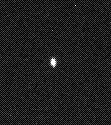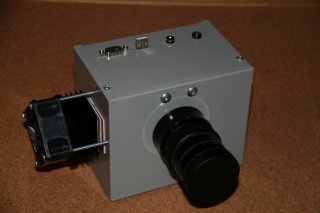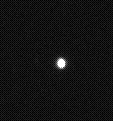Elongated Stars – Problem solved
Early last week, in my quest to find the source of my elongated stars problem, I was doing research on the internet when I came across a paper by Craig Stark titled: “What to do When PHD Guiding isn’t Push Here Dummy“. In his paper, Mr. Stark discusses the possible effect of gravity on stars in guided astronomical images. It got me thinking that my camera, being somewhat heavy, might be pulled down too much by gravity, thus creating some sort of tilt in the image train.
I then conducted another test: I took 4 series of 10 seconds images guided at various altitudes (i.e. 45, 51, 69 and 77 degrees). I then ran each series through CCD inspector to analyze the results. Here is what I found about the tilt measurement:
45 degrees, tilt X: -0.7″ , tilt Y: -1.3″
51 degrees, tilt X: -0.4″ , tilt Y: -0.5″
69 degrees, tilt X: -0.1″ , tilt Y: -0.2″
77 degrees, tilt X: -0.1″ , tilt Y: -0.2″
On average, The flatness measurement in Maxim DL was between 0.24 and .40 (i.e. the stars had between 24% to 40% elongation). Here is a crop showing the elongation:
Conclusion: as the altitude raised, the tilt (i.e. elongation) was getting smaller. It became obvious that gravity was pulling the camera downward enough to create this undesirable effect.
The cooled Canon 350 in its plastic enclosure weight was 3 pounds 9 ounces. Furthermore, the heat sink and fan were located at the back of the enclosure (i.e. far away from the focuser), making things worse due to the lever effect being produced.
The next day, I disassembled the camera from the enclosure to cut its weight and took a 4 minutes exposure. The tilt measurement was X: -0.2″, Y: -0.4″ and the Maxim DL flatness average measurement was between 0.18 and 0.22 (i.e. the stars had a reduced elongation of 18% to 22%). I was on to something.
I then spent the last week replacing the camera enclosure with a lighter one and changing the geometric configuration to bring the weight closer to the focuser. I completed these changes on Thursday and last night, I ran a last test…SUCCESS: the stars elongation now average between 8% to 18% which are results I was obtaining before the first cooling modifications of my camera. Here is a picture of the camera in its new enclosure. It now weights 2 pounds 11 ounces.
Here is another crop showing the improvement:
I will be writing a paper about the cooling modifications I made to my Canon 350D. Look for it in the article section of my website.
Now, hopefully, I’ll spend more time imaging and less troubleshooting.
Follow Clearskypix - 3D Printed Astronomy Parts and Accessories on Facebook.



